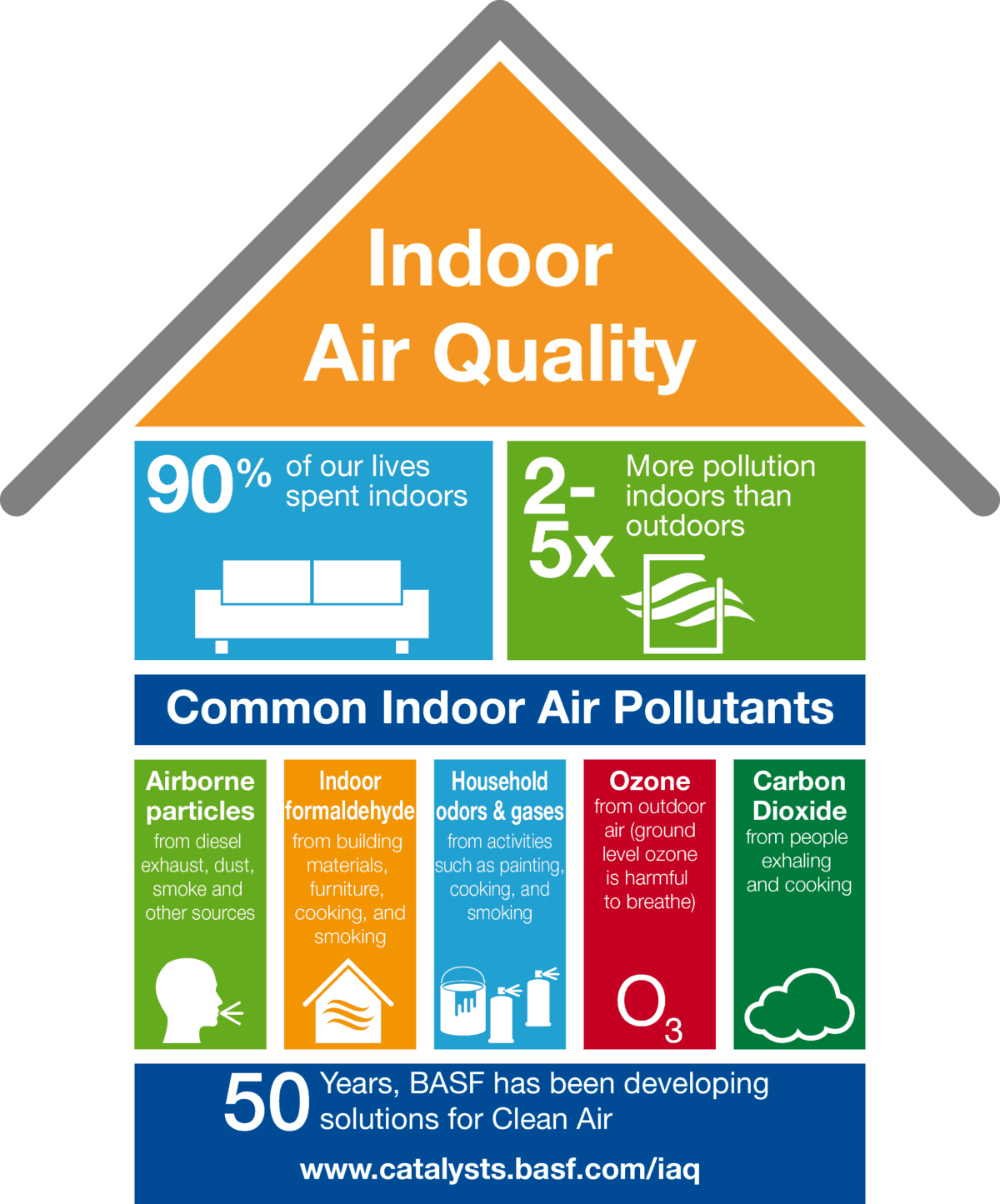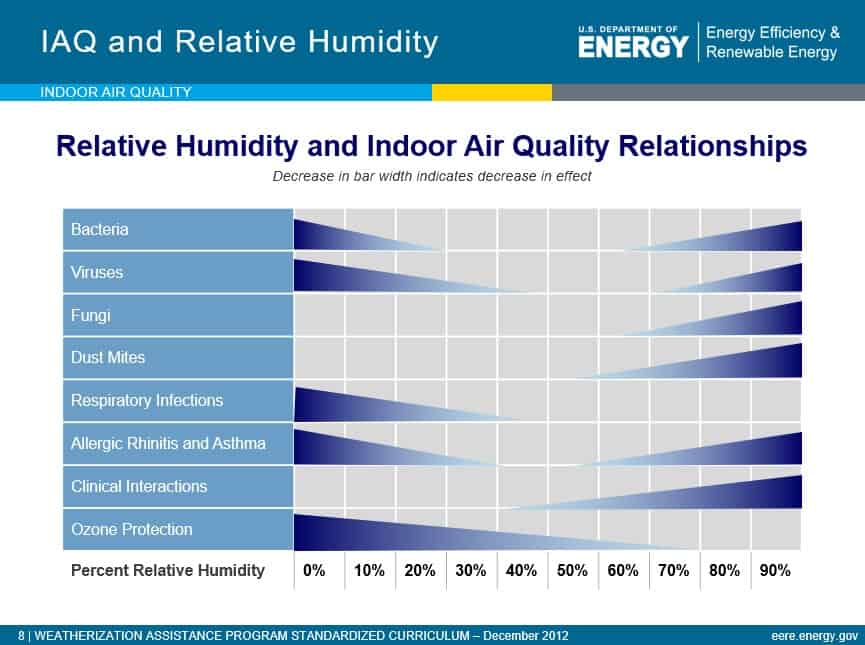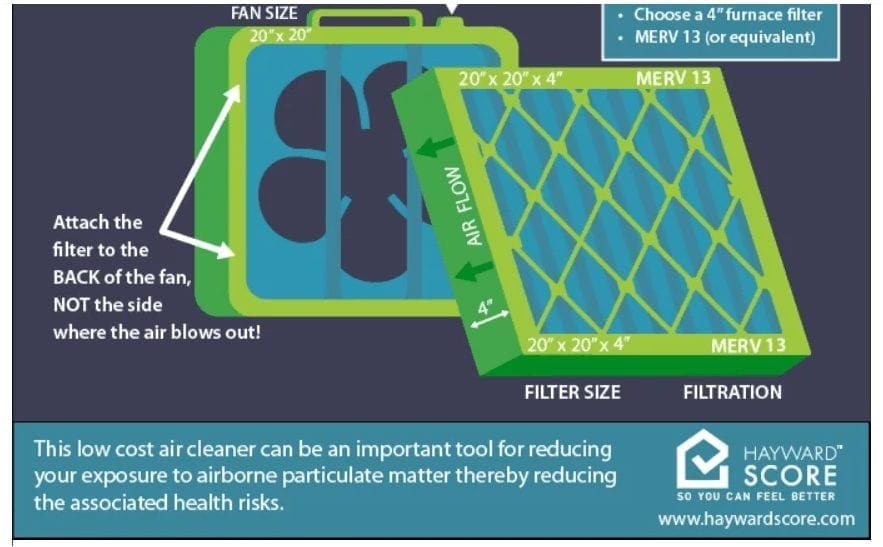Immediately Improve Your Indoor Air Quality in the Face of COVID-19

Improving health, safety, and indoor air quality in our homes and buildings has become an indispensable obligation during pandemic times.

Published April 20, 2020
What Is Indoor Air Quality and Why Is It Important?
"Indoor Air Quality (IAQ) refers to the air quality within and around buildings and structures, especially as it relates to the health and comfort of building occupants. Understanding and controlling common pollutants indoors can help reduce risk of indoor health concerns."

Source: BASF Catalysts
Navigating Indoor Air Quality in Homes & Buildings
We all find ourselves navigating a new “normal” as we move from working outside of our homes in all aspects of our lives, to living and working inside our homes and apartments.
This indoor environment leads to questions such as:
- What should builders be doing to keep their homes as safe as possible?
- What should homeowners be considering to make their homes as clean and safe as possible?
We are taking the opportunity to review these questions and give you a few actionable steps to implement which can improve your indoor air quality immediately. These steps will hopefully be in addition to all the steps that the Centers for Disease Control and Prevention (CDC) is already recommending to address concerns of the COVID-19 pandemic. I imagine that many of those are now thoroughly ingrained in all of our brains. Ideally, this will expand on the now needed knowledge of chemistry, microbiology, and physics going on in all of our buildings.
Increase Outside Air Flow Into the Building
This is crucial. Bring more fresh filtered outdoor air into the building. If mechanical ventilation options are not available, open your windows and doors as much as possible. This can help extract and reduce airborne contaminates, making infection less likely. This needs to be done in a controlled manner, not through random holes in the building envelope, which can increase exposure to toxic VOCs, construction particulates, pests, and/or chemicals from garages and crawlspaces. Since windows can only be opened so much throughout the year, it becomes critical to ensure a controlled mechanical ventilation strategy is included in the building design. This is a topic that has only recently been addressed by the code councils and has had much more consideration in larger commercial buildings.
The concept of outside air or ventilation air is still somewhat of a novelty to many builders, homeowners, and HVAC contractors in their understanding of how it relates to a healthy home. Building science principles and the codes that come from them are usually an afterthought for most builders and homeowners with houses built before there were such standards.
Indoor Air Quality (IAQ) experts are now more than ever recommending increasing the fresh air being brought into the homes as recommended by the maximum that code or ASHRAE's guidelines propose if possible. If known biologic contamination is present increasing this, even more, should be considered. Hospitals ventilate at a rate of up to 12 air changes an hour.
In a study from 2019, it was found that ensuring even minimum recommended levels of ventilation can be as effective for preventing influenza as having 50% to 60% of the folks in the building vaccinated!
We are starting to see an interest in supply-side ventilation systems that do not rely on the air handler itself for ventilation air but does the ducting to distribute this air to all rooms of the home. The advantage of this is bringing in fresh air from a known, outside source and not from random holes in the building as most exhaust ventilation strategies do. This air can then be filtered as it is brought into the home and then tempered by the duct system as it is distributed throughout the home. These can also be fairly energy efficient using 30-50 watts, much less than the 200-1000 watts using the air handler.
Keep Relative Humidity Between 35% - 60%
Another interesting consideration is to increase and/or keep relative humidity (RH) between 35% - 60%. This is important because 80% of droplet nuclei of bacteria and viruses deteriorate in this humidity level. Lower and higher levels of RH can increase the viability of biological contaminates. An important caveat to remember is that condensation can occur on the inside of windows and cold surfaces depending on inside and outside temperatures and should be monitored.
Careful monitoring of the RH is recommended at all times of the year. Please see the chart below to review how RH relates to various indoor air contamination.

Image Source: Energy Efficiency & Renewable Energy (Energy.gov)
The Importance of Air Purification
Air purification is also worth considering in high contact areas in buildings and homes. Studies have shown a dramatic increase in asthma and other respiratory conditions in homes with high particulate counts. The particulates also give away for biological contaminates to attach and be distributed throughout the home. Many portable EPA approved HEPA filtration systems can filter 99.9% of particulates.
Wirecutter published a great review of many consumer-available models to consider. Some of the available filters can also be effective during our increasingly frequent wildfire seasons.
Note: If higher Minimum Efficiency Reporting Value (MERV) filtration is added to the HVAC air handler system, care should be taken to see if the system is designed for these filters. An HVAC professional should be consulted as these can greatly reduce airflow in systems causing potential heating and cooling performance issues.
This clever design below can quickly and cost-effectively be used in many indoor areas.

Image Source: Hayward Score
Basic Cleaning Makes All the Difference
Basic cleaning considerations can make all of the difference. The CDC recommends many over the counter and commercial cleaners. It should be realized, however, that many of these cleaners can be fairly toxic and that care should be taken following the directions on the labels. “Green cleaners” are generally acceptable in home settings and basic soap is considered to be as effective in removing most bacteria and viruses. The EPA has a Safer Choice label on products as well.
It is widely accepted that diluting the air in any manner should be considered when using cleaning products: open your windows and doors or introduce more outside air. (See more on this point above in the recommendations of how to ventilate homes.)
Much has been written about how to clean and disinfect surfaces beyond this article. Here is a basic outline:
- There is hierarchy of surfaces to clean, pay close attention to traffic patterns in our homes - those being built and those already lived in.
- High touch surfaces should be cleaned with an approved cleaner or diluted bleach solution, multiple times a day if possible.
- Basic CDC guidelines state that gloves and an N-95 mask, or any mask under the N95 shortage, should be worn during cleaning.
Five Steps That Builders & Homeowners Can Take Today
In conclusion, what are the immediate step you as a builder or a homeowner can take in addition to the CDC recommended cleaning?
- Increase ventilation into the home in any manner available: turn on all fans, whole-house ventilation fan on the highest setting, and open windows and doors as weather permits.
- Increase humidity to above 35% but keep below 60%.
- Consider filtering the air using the HVAC system with the highest MERV filter the system was designed for.
- Clean the air with some kind of a portable system within heavily used areas.
- Follow basic cleaning practices.
Let Us Know How We Can Help
Please contact us directly with additional questions or concerns. It is EnergyLogic's goal to serve as your integrated partner and to help implement the best industry standards available.




